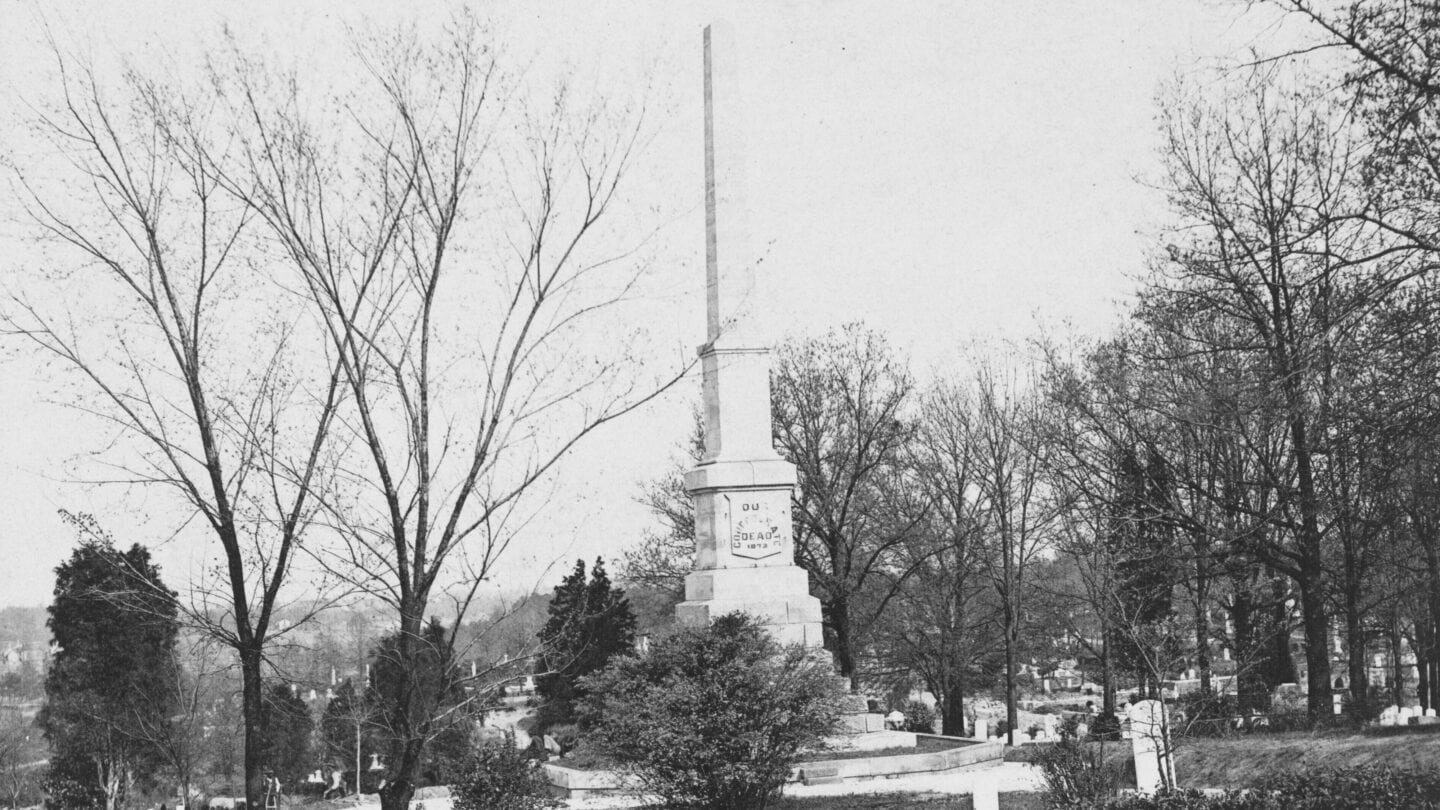
Confederate monuments were built across the United States, including in states that were not part of the Confederacy. Even today, new monuments are being erected, while others are being removed.
Confederate Monuments. And Symbolism.
When discussing Confederate monuments, it is useful to group them into three general categories. The first category is Phase One monuments, or early funereal monuments erected from the 1860s through the 1880s. Often placed in cemeteries and taking the form of obelisks, arches, or fountains, these monuments were typically intended to commemorate Confederate dead. Usually erected by ladies’ memorial associations, these monuments served as centerpieces for activities, such as Confederate Memorial Day. The profound impact that the Civil War had on the white Southern population must be considered when examining these monuments. At least 20% of all white men of military age in the Confederacy died during the war. Because almost every white family in the South experienced loss, there was a great desire to create mourning spaces.
The majority of remaining Confederate monuments are of a different character and purpose. These Phase Two monuments, erected from the 1890s through the 1930s, coincide with the expansion of the white supremacist policies of the Jim Crow era. These monuments often feature celebratory images meant to justify the Confederate cause as a moral victory. Put simply: an equestrian statue of a Confederate general in front of a courthouse or capitol building is not about mourning or loss. It is about power and who was in charge. The strategic placement of monuments at public sites was meant as an official and permanent affirmation of the Lost Cause of the Confederacy.
Lost Cause ideology promoted the idea that the Confederacy achieved a moral victory in the Civil War. The belief system denied the role of slavery as the primary cause of the war and ignored freedom as an achievement of U.S. victory. The Lost Cause tries to delete the African American perspective from the historical narrative. It discounts the fact that a significant number of Southerners (if not a majority) were opposed to the ideology and concept of the Confederacy, given the stark reality that nearly 40% of the Southern population was enslaved.
A new period of Confederate monuments (which we call Phase Three monuments) followed the U.S. Supreme Court’s decision mandating desegregation in the case Brown vs. Board of Education in 1954. As a show of “massive resistance,” segregationists revived Confederate imagery. For example, the Confederate battle flag was incorporated into the Georgia state flag in 1956, a Confederate battle flag was flown over the state capitol building in South Carolina in 1961, and new monuments were created. These included Stone Mountain, purchased by the state of Georgia in 1958 specifically to create a Confederate monument. Confederate imagery was used as a rallying point for proponents of segregation.
Understanding the historical context of Confederate monuments is an important starting point when discussing possible actions taken in response to them.
Further Reading.
Learn about the historical issues explored in this introduction, as well as Atlanta History Center’s work in this area, in the following books and articles. For more, visit our Resources page.
- “Confronting Difficult History,” History Matters, Winter 2020
- Race and Reunion: The Civil War in American Memory, David Blight
- “Whose Heritage? Public Symbols of the Confederacy”
Resources. Toolkit.
-
Projects & Initiatives
A toolkit designed to help communities address Confederate monuments in their midst.
-
Confederate Monument Interpretation Guide
The Advisory Committee on City of Atlanta Street Names and Monuments Associated with the Confederacy was tasked with making recommendations for a variety of monuments on city property and street names throughout Atlanta.
-
Confederate Monument Interpretation Guide
Confederate Monument Interpretation Guide media coverage.
-
Confederate Monument Interpretation Guide
This research template provides a guide for conducting research on individual monuments in local communities.